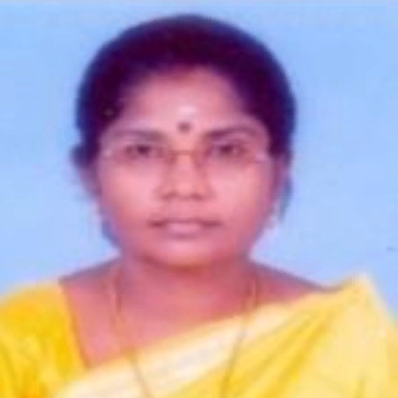International Journal of Engineering and Manufacturing (IJEM)
IJEM Vol. 12, No. 1, 8 Feb. 2022
Cover page and Table of Contents: PDF (size: 549KB)
Cystic Region Detection Using Hybrid Fuzzy-based Multi-Region Normalization
Full Text (PDF, 549KB), PP.29-36
Views: 0 Downloads: 0
Author(s)
Index Terms
Fuzzy C Means, Image processing, Fuzzy membership degree, Detection of Dentigerous cysts, Mouth Radio graphics Deferential Diagnostic program.
Abstract
One of the main purposes of this approach is to automatically extract the cystic border. Several of the semi-automatic segmentation strategies that have already been used may result in incomplete categorization, which is likely to fail as well as causes solitary pixel in noise dentistry x-rays images due to sampling artifact. As such, cyst boundaries are not removed appropriately. It focuses on the elimination of solitary pixels caused by artefacts. This suggested technique uses both the fuzzy memberships function of every pixel as well as localized spatially information of the neighbor pixels to accomplish the maximum feasible levels of automated processes for computers-aided diagnostics or identification of illnesses. That fuzzy-based multi-region normalization is implemented in five phases. To begin, FCM techniques are used to determine the numbers of centroids. This fuzzified function is constructed as well as provides memberships degree numbers to any and every pixel within every class based on the number of cluster centers as well as the shape of the histogram. It generates an intermediary segmentation output by fuzzy memberships degrees at about this step. This fuzzy localized aggregating of the neighborhood pixels will be the fourth phase, with the greatest responsiveness of the memberships degree generating pixels being kept in mind only for ultimate cystic area retrieved outputs.
Cite This Paper
S.Prasath, D.Karthiga Rani, " Cystic Region Detection Using Hybrid Fuzzy-based Multi-Region Normalization ", International Journal of Engineering and Manufacturing (IJEM), Vol.12, No.1, pp. 29-36, 2022. DOI: 10.5815/ijem.2022.01.03
Reference
[1] S. Sheela, M.Sumathi, “Enhancer for ovarian cyst segmentation using adaptive thresholding technique” in Indian Journal of Science and Technology, 2020 Nov 7, Vol.13, Iss.39, pp.4142-50.
[2] A Cordido, E Cernadas, M Fernández-Delgado, MA García-González MA, “CystAnalyser: A new software tool for the automatic detection and quantification of cysts in Polycystic Kidney and Liver Disease, and other cystic disorders”, PLoS computational biology”, 2020 Oct 22, Vol.16,Iss.10,e1008337.
[3] C.Gopalakrishnan, M.Iyapparaja, “Multilevel thresholding based follicle detection and classification of polycystic ovary syndrome from the ultrasound images using machine learning” in International Journal of System Assurance Engineering and Management, 2021, Aug 6:1-8.
[4] S.Chakraborty, K Mali, A Banerjee, M.Bhattacharjee, “A Biomedical Image Segmentation Approach Using Fractional Order Darwinian Particle Swarm Optimization and Thresholding”, Advances in Smart Communication Technology and Information Processing: OPTRONICS 2020-2021,pp. 299-306, Springer Singapore.
[5] L Rundo, L Beer, S Ursprung, P Martin-Gonzalez, F Markowetz, JD Brenton, M Crispin-Ortuzar, E Sala, Woytek R, “Tissue-specific and interpretable sub-segmentation of whole tumor burden on CT images by unsupervised fuzzy clustering” in Computers in biology and medicine. 2020 May 1;120:103751.
[6] S. Roychowdhury, “Few Shot Learning Framework to Reduce Inter-observer Variability in Medical Images”, In2020 25th International Conference on Pattern Recognition (ICPR) 2021 Jan 10, pp. 4581-4588, IEEE.
[7] Oleksandr Pliushch, Viktor Vyshnivskyi, Volodymyr Tolubko, Vadym Mukhin, Serhii Ishcheryakov, Mykhailo Okhramovych, Vitalii Loza, "Performance Study of Spread Spectrum Systems with Hard Limiters", International Journal of Computer Network and Information Security(IJCNIS), Vol.12, No.5, pp.1-15, 2020. DOI: 10.5815/ijcnis.2020.05.01
[8] Garikapati, P., Balamurugan, K., Latchoumi, T. P., & Malkapuram, R. (2021). A Cluster-Profile Comparative Study on Machining AlSi 7/63% of SiC Hybrid Composite Using Agglomerative Hierarchical Clustering and K-Means. Silicon, 13, 961-972.
[9] Thanh DN, Hien NN, Surya Prasath VB, Erkan U, Khamparia A, “Adaptive thresholding skin lesion segmentation with Gabor filters and principal component analysis”, in intelligent Computing in Engineering 2020 (pp. 811-820). Springer, Singapore.
[10] Hu K, Liu S, Zhang Y, Cao C, Xiao F, Huang W, Gao X., “Automatic segmentation of dermoscopy images using saliency combined with adaptive thresholding based on wavelet transform”, Multimedia Tools and Applications,2020 Jun, 79(21):14625-42.
[11] Elie Tagne Fute, Doris-Khöler Nyabeye Pangop, Emmanuel Tonye, "A Hybrid Approach for the Multisensor Patrolling Problem in an Unknown Environment with Obstacles", International Journal of Computer Network and Information Security(IJCNIS), Vol.12, No.5, pp.16-30, 2020. DOI: 10.5815/ijcnis.2020.05.02
[12] Touil A, Kalti K, Conze PH, Solaiman B, Mahjoub MA, “Morphological-based microcalcification detection using adaptive thresholding and structural similarity indices”, In2020 5th International Conference on Advanced Technologies for Signal and Image Processing (ATSIP) 2020 Sep 2 (pp. 1-6). IEEE.
[13] Patra DK, Si T, Mondal S, Mukherjee P., “Breast DCE-MRI segmentation for lesion detection by multi-level thresholding using student psychological based optimization”, Biomedical Signal Processing and Control. 2021 Aug 1;69:102925.

